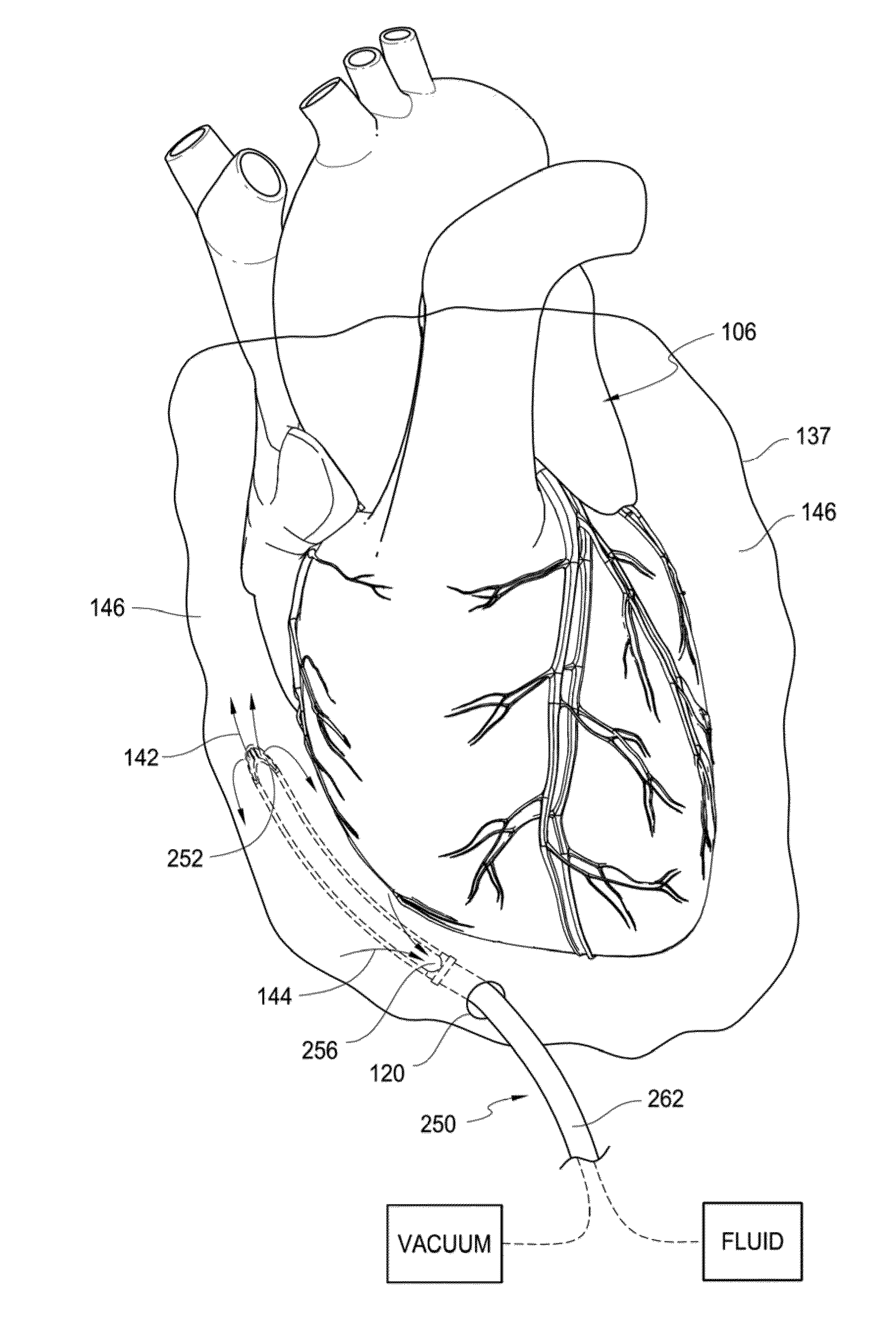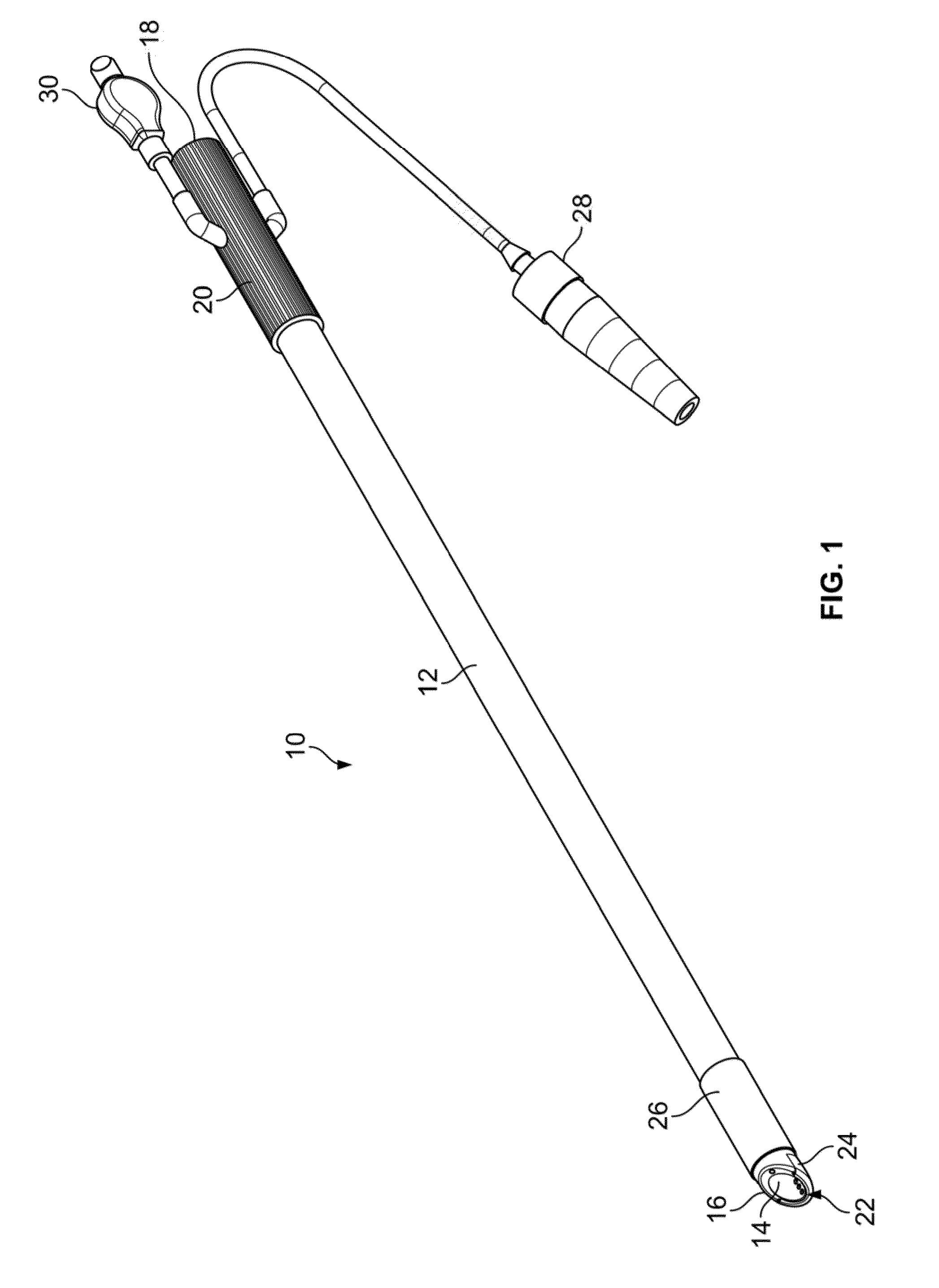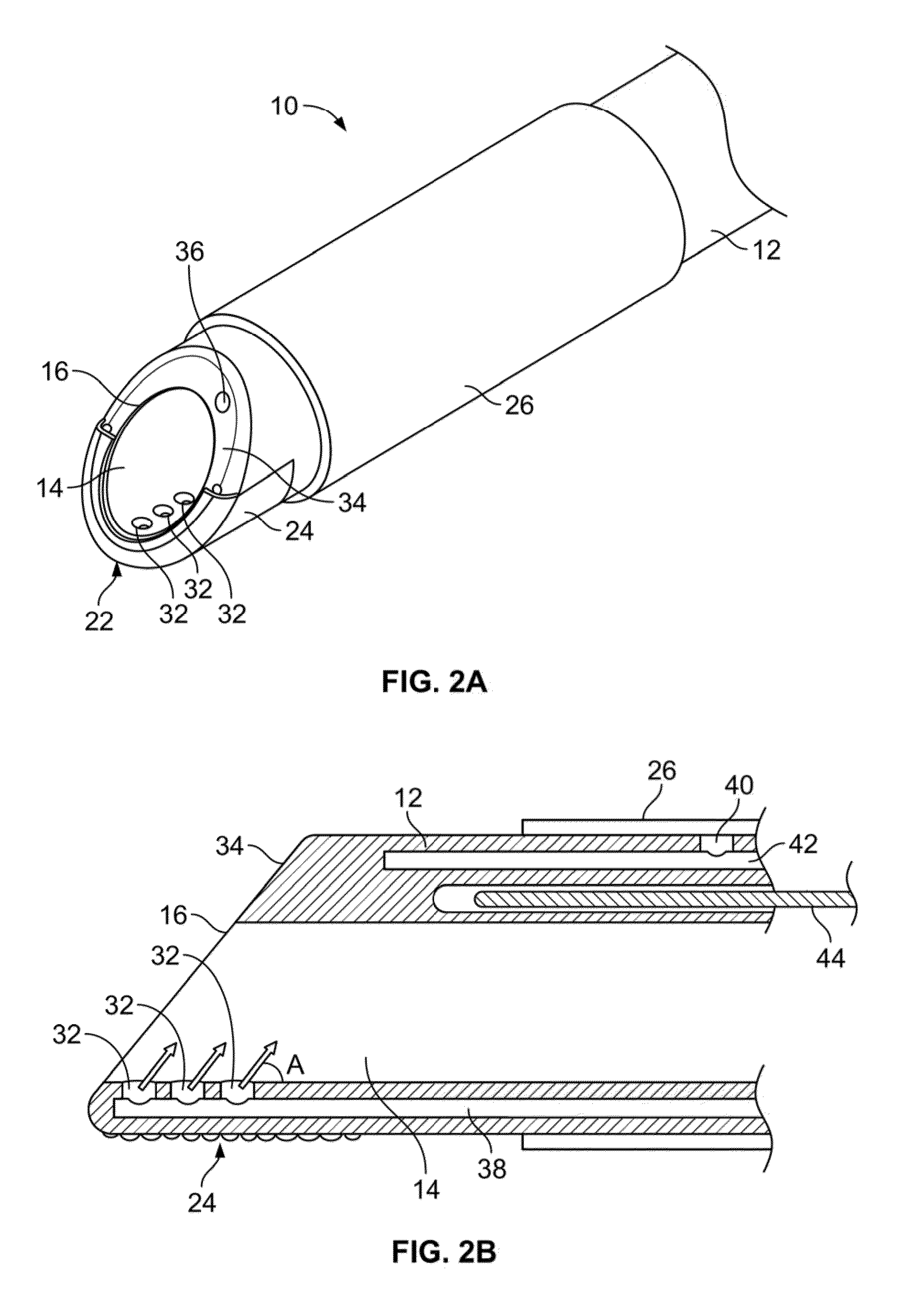Subxyphoid epicardial ablation
a subxyphoid and epicardial technology, applied in radiation diagnostic clinical applications, endoscopic cutting instruments, applications, etc., can solve the problems of less control of the amount of tissue dissection by the physician, less invasive treatment, and reduced number of devices that the physician must manipulate in the surgical area. , to achieve the effect of less invasive treatmen
- Summary
- Abstract
- Description
- Claims
- Application Information
AI Technical Summary
Benefits of technology
Problems solved by technology
Method used
Image
Examples
examples
[0172]FIGS. 14A to 14F illustrate radiological images of exemplary procedures for subxyphoid introduction of coagulation devices. FIG. 14A illustrates the inerstion of a guided device into the pericardium over a guidewire 62. The physician performs a pericardiocentesis and inserts a into the pericardial space. Then the physician advances a guidewire through the needle into the pericardial space. A balloon catheter 70 that is advanced over the guidewire is inflated to open the pericardial access site. The physician then retracts the balloon 70 to create a channel allowing for advancement of a coagulation or other treatment device over the guidewire and into the pericardial space.
[0173]FIG. 14C shows an example of creation of right atrial lesions. The physician manipulates the treatment device 200 within the pericardium against the right atrium. The physician then positioned the device 200 is over the guidewire and along the right atrium. The devices 200 guidewire lumen (located 1800 ...
PUM
 Login to View More
Login to View More Abstract
Description
Claims
Application Information
 Login to View More
Login to View More - R&D
- Intellectual Property
- Life Sciences
- Materials
- Tech Scout
- Unparalleled Data Quality
- Higher Quality Content
- 60% Fewer Hallucinations
Browse by: Latest US Patents, China's latest patents, Technical Efficacy Thesaurus, Application Domain, Technology Topic, Popular Technical Reports.
© 2025 PatSnap. All rights reserved.Legal|Privacy policy|Modern Slavery Act Transparency Statement|Sitemap|About US| Contact US: help@patsnap.com



